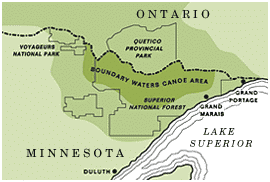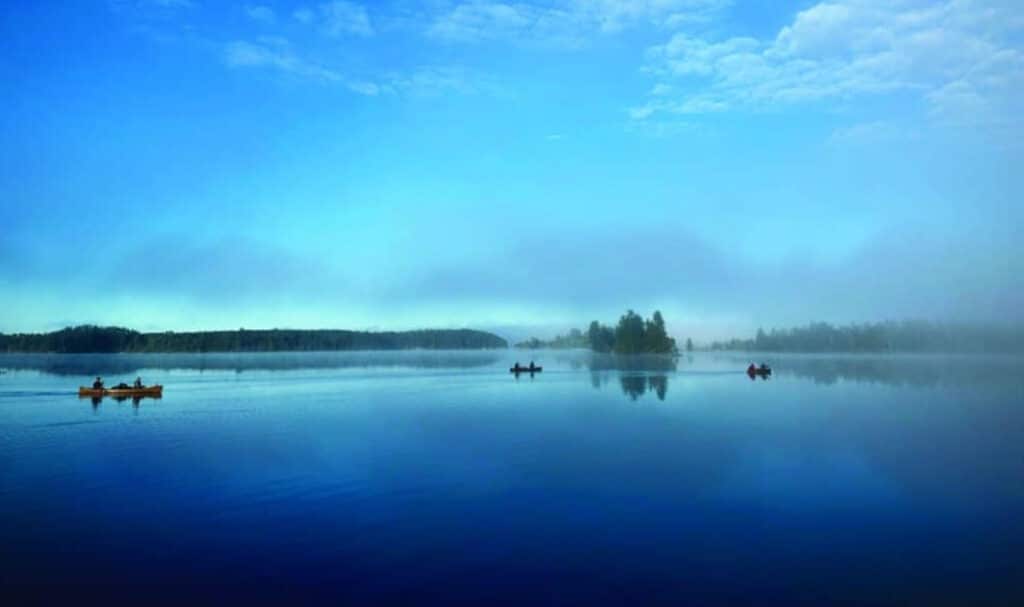
A new bill could permanently alter how the Boundary Waters’ border with Canada is patrolled. Republican Senator Mike Lee of Utah recently introduced the Border Lands Conservation Act, which would allow the federal government to expand border patrol operations using tactical infrastructure and surveillance systems. Wilderness advocates argue that the bill would undo protections established by the Wilderness Act, and they vow to fight it.
Wildlands at risk
Congress passed the Wilderness Act in 1964 to protect undeveloped federal lands such as the Boundary Waters Canoe Area Wilderness (BWCAW). The Act defines wilderness as a place that is “without permanent improvements or human habitation, which is protected and managed so as to preserve its natural conditions.”
Now, Senator Lee’s Border Lands Conservation Act threatens to alter the landscape and change how visitors experience this place. His bill would give the Department of Homeland Security broader access to federal lands, including wilderness areas. This area includes land within 100 miles of the northern and southern borders of the United States and encompasses the entire BWCAW, Voyageurs National Park, as well as all of the Superior National Forest (SNF).
If Congress advances the bill, Homeland Security could build new infrastructure and install surveillance along the border. This would include “tactical infrastructure” such as “observation points, remote video systems, motion sensors, vehicle barriers, fences, roads, bridges, drainage structures, and other detection devices.”
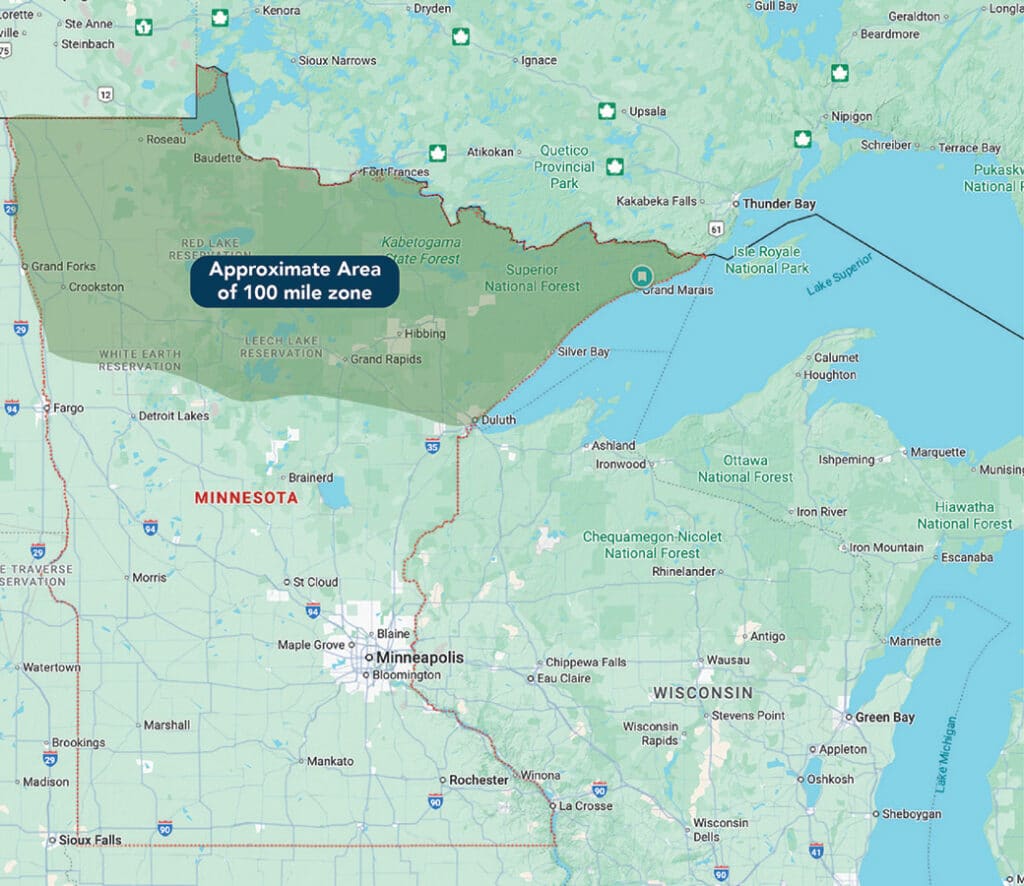

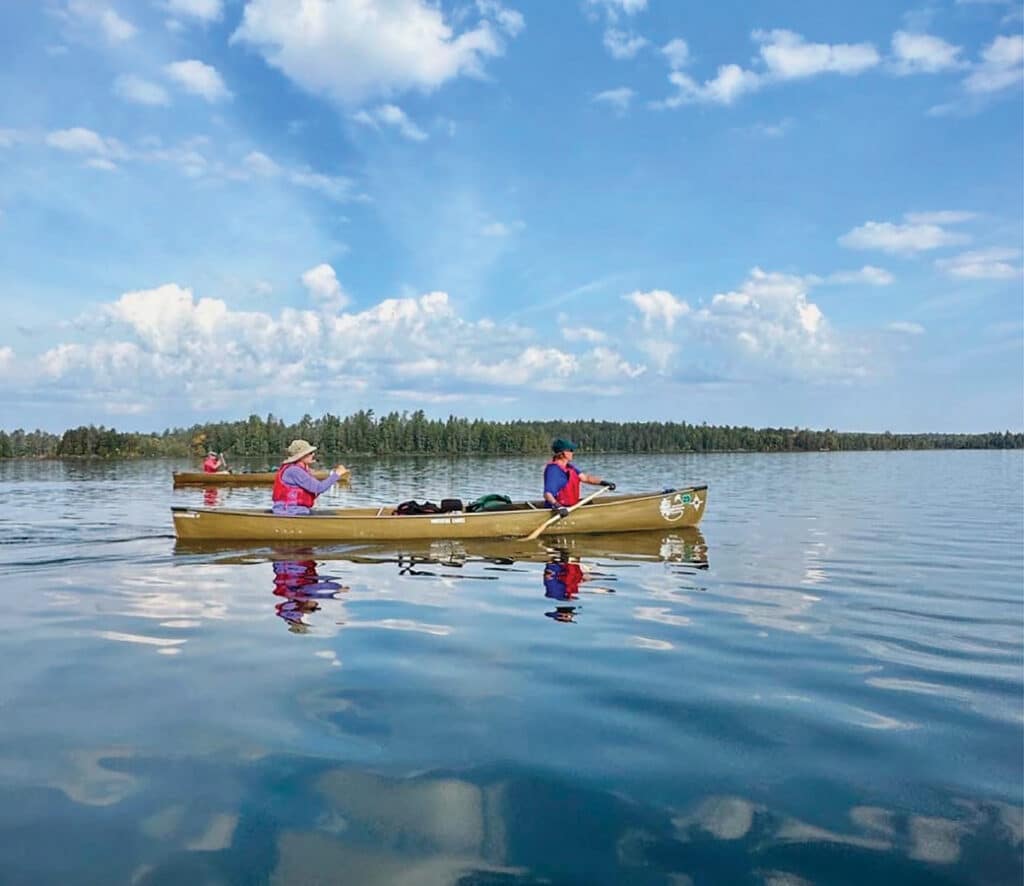
Watery landscape
In keeping with the wilderness ethic, the Boundary Waters currently has no roads, bridges, or fences. Under a mutual agreement between the U.S and Canada, citizens of both countries can share the portages and waterways directly along the border of the BWCAW. Just to the west is the watery landscape of Voyageurs National Park. Looking at a map, it’s clear that most of the 200 miles between the two consist of water.
Quetico Provincial Park, another million-acre wilderness, borders the north side of the BWCAW. It also attracts wilderness paddlers. A handful of modest ranger stations line the internatioal border, two on the U.S. side and three on the Canadian side. They allow travelers with valid permits and passports to cross between the two countries.
There are other subtle indications of the boundary. While paddling international waters, careful observers may also spot the occasional small metal markers cemented into the rocks that indicate the border. Because of all of the natural barriers, crossing the border illegally through this terrain would be extremely difficult without wilderness survival skills.
Strong feelings on both sides
Representative Pete Stauber of Minnesota’s 8th District, which includes all of the SNF, supports the bill. He told the Minnesota Star Tribune (Tribune) that the Biden Administration’s border policies led to “left-behind trash, human waste, illegal trails, and abandoned campfires.” Stauber believes that if the legislation were to pass, it would prevent similar problems from happening in the Boundary Waters.
Wilderness advocates strongly disagree. Pete Marshall with Friends of the Boundary Waters told the Tribune that the bill appears to be Senator Lee’s attempt to “gut the Wilderness Act, reduce public lands protections, or do away with public lands altogether.”
Furthermore, Senator Tina Smith has also voiced concern, warning that the bill could cause irreversible environmental harm. She told Northern News Now that, “Americans want to see our public lands protected, but Senator Lee’s bill overwrites important protections in the original Wilderness Act and could result in serious harm to our wild places, including the Boundary Waters. The Boundary Waters… is one of this country’s great natural treasures, and I’m going to do everything in my power to fight any piece of legislation that would threaten this precious place.”
Illegal crossings along the entire border are trending downward. The Canadian government has reported that illegal crossings from Canada into the U.S. were down 99% in July 2025 from peak levels in June 2024. Statistics about illegal crossings through the BWCAW were not publicly available as data is broken down by sector. The BWCAW falls within the Grand Forks Sector which encompasses 861 miles of border across three states.
The Boundary Waters covers 1.1 million acres of northern Minnesota. It is the largest wilderness area east of the Rocky Mountains. The proposed changes could have lasting impacts not only on the wilderness itself but also on the surrounding National Forest.

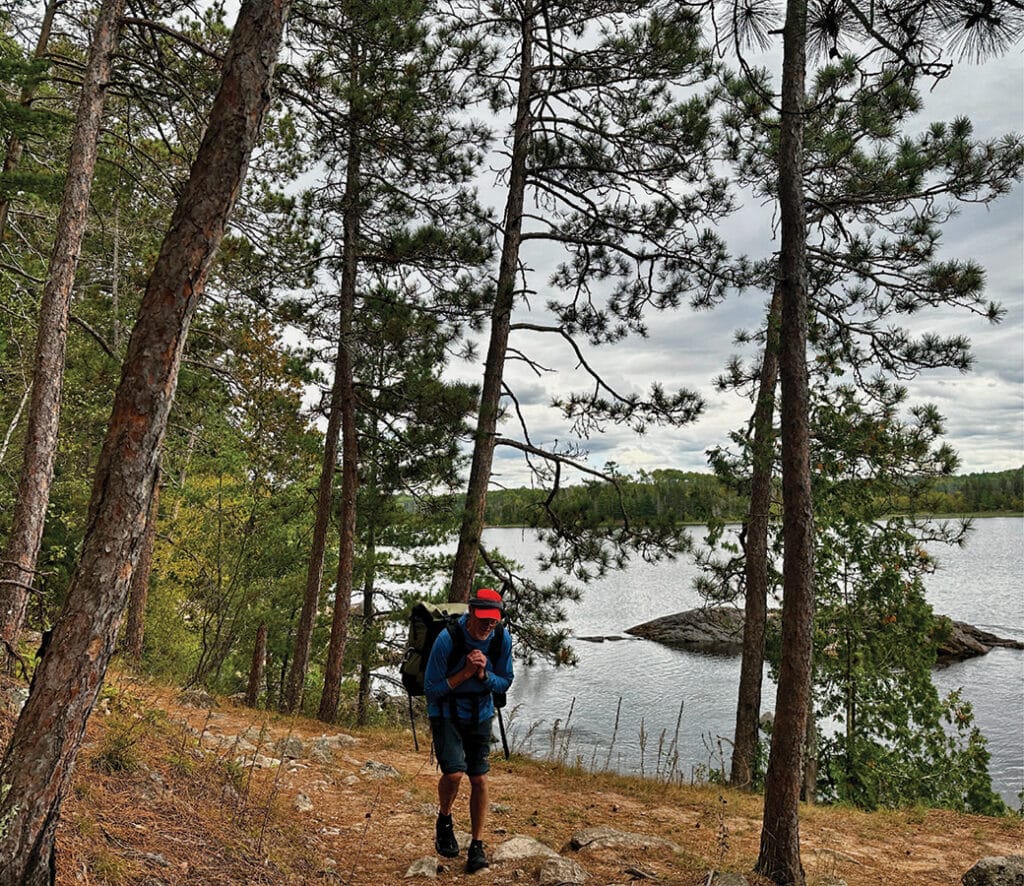
More info:
- Border Lands Conservation Act
- GOP bill would allow border patrol operations, infrastructure in the Boundary Waters – The Minnesota Star Tribune
- Bill in US Senate gives federal access to Boundary Waters Area Canoe Wilderness – Northern News Now
- Senator Mike Lee’s Border Bill guts the Wilderness Act, potentially impacting all Wilderness areas in the U.S. – Wilderness Watch

